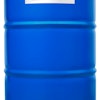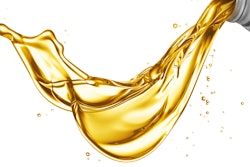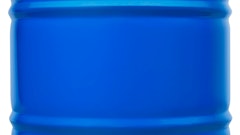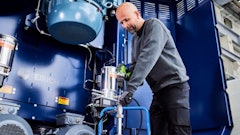
In the United States heavy duty trucking lubricants market, the drive for energy efficiency is influencing a transition from SAE 15w-40 diesel engine oils to those with lower viscosity grades such as SAE 10w-30. This shift is accelerating as engine builders adopt and expand lubrication recommendations for lower viscosity SAE grades, and a growing number of major trucking companies use them. Most are transitioning to SAE 10w-30, but depending on equipment builder recommendation for temperature conditions, other viscosity grades in SAE 5w-X and even 0w-X are being considered.
In the past, there have been similar shifts in preferred engine oil viscosity grades. An example is the transition in heavy duty diesel engine oils in the 1980s from monograde viscosity SAE 30 and SAE 40 to multi-grade viscosity SAE 15w-40. This change was driven by fuel efficiency as well as the convenience of dealing with one viscosity grade year round, as opposed to having to change between lighter and heavier grades for winter and summer use. There were innovative commercial trucking companies who started using SAE 15w-40 engine oils before the general market to gain operational advantages over those using monograde oils.
Current Trend and Lower Fuel Cost Advantage
Innovators and early adopters keep abreast of new technologies or approaches and are willing to apply them according to Crossing the Chasm by Geoffrey Moore, Harper Collins Publishers. For engine oils, the gap between early adopters of a new product approach and the rest of the market can be influenced by how quickly engine builders adopt or support a new approach. There may be companies operating truck fleets or construction equipment willing to risk equipment warranties to gain operational benefits, but those in the pragmatist mainstream usually wait for equipment builder acceptance.
Today, major diesel engine builders such as Caterpillar, Cummins, Paccar, and Navistar include lower viscosity grades in their oil viscosity recommendations CITATION SEB19 \l 1033 (SEBU6250 Caterpillar Machine Fluids Recommendations, 2019). The lower viscosity helps reach the US EPA, NHTSA Phase II fuel efficiency standards, which went into effect December 27, 2016. An SAE 10W-30, for instance, can offer up to a 3% fuel efficiency advantage compared to an SAE 15W-40. With the lion’s share of trucking operating budgets going toward fuel cost, a potential 3% reduction is a significant economic gain.
Engines used in transport vehicles, whether fueled by gasoline, diesel, or natural gas, convert an energy source into power which is then available for motion. Engine builders are constantly seeking methods to make the process of converting the fuel source to available power more efficient; studying all areas where power leaks away before the “tire meets the road.” One of the areas considered is the oil used for engine lubrication. Engine oil provides cooling, cleaning, wear protection, rust and corrosion protection, and lubricity for moving mechanical parts. The presence of the oil decreases friction of metal parts relative to each other, but the oil itself creates a bit of energy loss through fluid friction as it circulates through the engine. The heavier the viscosity of the oil, the higher this fluid friction energy loss will be.
Other Benefits of Lower Viscosity Engine Oils
Beyond fuel efficiency, an advantage of properly formulated engine oils with better flow characteristics over those in the SAE 15W-40 grade, is the oil’s ability to reach lubrication points faster on engine startup. This is especially important when engine operation requires frequent startups, or in colder climates. Depending on ambient temperature levels and the SAE grade used, the use of block heaters can sometimes be avoided. Avoiding the use of a block header adds to the energy savings tally.
Use of lower viscosity engine oil provides lower fluid friction energy loss, but the oil must have enough viscosity to provide the needed oil film thickness for adequate lubrication and machine durability. During operation, the oil film varies throughout the engine. This results in lubrication modes anywhere from full film to boundary lubrication CITATION Jea18 \l 1033 (Rensselar, 2018). The use of lower viscosity engine oils affects lubrication modes. The lower the viscosity, the increased potential to be in a boundary lubrication mode. It’s important that engine oil formulations take this into account, providing surface protection through all lubrication modes. To maintain engine durability, equipment builders consider this when developing lubricant viscosity recommendations for new engine designs.
Since lower viscosity grade engine oils will exhibit less resistance to flow within an engine, engine operators should expect to see lower oil pressure readings than what they’re used to seeing with an SAE 15w-40. Another consideration is operating conditions that may introduce abrasive contaminants into the oil. Abrasive particulates larger than the oil film could accelerate wear. The importance of proper filtration in these environments increases with the use of lower viscosities.
Viscosity is only one aspect of a heavy duty diesel engine oil. There is a complex mixture of various performance additives, coupled with select lubricant stocks that make up the engine oil. Approaches to this mix continue to change as builder engine protection requirements evolve. Industry specifications, such as API CK-4, provide assurance engine oils meet protective performance requirements through various testing protocols. Engine manufacturers will specify the oil performance classification and oil viscosity required for your machine. API CK-4 engine oils are backward compatible with previous API performance categories, but API FA-4 engine oils may not be. API FA-4 engine oils take high temperature, high viscosity requirements down a notch compared to API CK-4, resulting in added fuel savings potential. Because of this, before using an API FA-4 engine oil you’ll need to check with your engine builder recommendations, especially if operating an older engine. Your lubricant supplier can also help you with finding the correct engine oil that meets OEM requirements.
The Future Outlook
The trend to lower viscosity engine oils is continuing. Engine builders have included SAE 10W-30 in lube recommendations since API CJ-4 was introduced in 2006. It hasn’t expanded much, but use of SAE 10w-30 is expected to accelerate. SAE 15w-40 has been the dominant viscosity grade in the past few decades. Its use has peaked and is now forecast to decrease by 30% by 2029, with SAE 10w-30 growing to about 40% of the US market CITATION Inf20 \l 1033 (Infineum USA L.P. , 2020). Engine builders are pushing their designs to address fuel economy and emissions requirements. The recent Volvo VDS-5 specification introduction could push use of SAE 5w-X oils, and increase the market’s comfort with lower viscosity API FA-4 oils CITATION Inf20 \l 1033 (Infineum USA L.P. , 2020).
Benjamin Briseño is the Lubricants Technology Manager at CITGO Petroleum. With over 36 years of experience in the lubricants industry, Ben has held various positions in technical services, product line management, supply, and sales management covering domestic and international markets. Ben holds a Bachelor of Science degree in Mechanical Engineering and Master of Science degree in Engineering Management from the University of Texas at Austin.


















